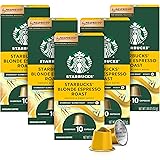Mastering the Art of French Press Coffee: A Complete Guide to Brewing Excellence at Home
There’s a particular warmth that spreads through you when you hold a freshly brewed cup of coffee, especially when you’ve crafted it yourself. I remember the first time I traded my automatic drip machine for a simple, elegant French press. The difference was startling – a richer, more robust flavor that instantly elevated my morning ritual. It wasn’t just about the caffeine; it was about the experience. As shown in the insightful video above, embracing the French press method truly opens up a world of delightful coffee possibilities right in your own kitchen.
The French press, a deceptively simple device, has been a beloved staple for coffee enthusiasts for generations. Known for its ability to produce a full-bodied, aromatic cup, this method allows the coffee grounds to steep directly in hot water, resulting in an unfiltered brew that captures all the natural oils and complexities of the coffee bean. For those seeking to deepen their understanding and truly perfect their French press coffee, a few fundamental principles are worth exploring.
The Essentials: Elevating Your French Press Brewing Experience
While the video provides an excellent visual walkthrough, diving deeper into a few key elements can transform a good cup of French press into an exceptional one. Precision and quality ingredients are paramount when aiming for that perfect brew.
Grind Size: The Foundation of Flavor
One of the most critical, yet often overlooked, aspects of brewing French press is the grind size. Unlike other brewing methods that require a fine or medium grind, the French press demands a coarse, even grind. Think of sea salt or breadcrumbs – visible particles, not a fine powder. If the coffee grounds are too fine, they can slip through the mesh filter, leading to a muddy cup filled with unpleasant sediment. Furthermore, a fine grind increases the surface area exposed to water, potentially causing over-extraction, which results in a bitter, astringent taste. Conversely, a grind that is too coarse might lead to under-extraction, producing a weak and sour brew. For optimal results, a burr grinder is generally recommended over a blade grinder, as it provides a more consistent particle size, crucial for even extraction.
Water Temperature: The Unsung Hero
The video above rightly emphasizes the use of hot water, but the specific temperature can significantly impact your final cup. Water that is too hot (boiling) can “burn” the coffee, extracting harsh, bitter compounds. If the water is too cool, the coffee might be under-extracted, leading to a weak or sour flavor. A generally accepted optimal range for brewing French press coffee is between 195°F and 205°F (90°C to 96°C). This temperature allows for the ideal solubles to be extracted from the coffee grounds without scorching them. It is often advised to bring water to a boil and then let it sit for about 30 seconds to a minute off the heat, allowing it to cool slightly into the ideal range.
Coffee-to-Water Ratio: The Key to Consistency
Achieving a consistently delicious cup of French press coffee hinges on maintaining a proper coffee-to-water ratio. While the video mentions using “enough coffee depending on how many cups you want,” a more precise approach can be adopted. A common starting point for French press is a 1:15 ratio of coffee to water. This means for every 1 gram of coffee, 15 grams of water are used. For example, if 30 grams of coffee are used (approximately 4-5 tablespoons of whole beans), 450 grams of water would be needed (450ml, as water has a density of approximately 1g/ml). For those who prefer a stronger, more intense brew, a ratio of 1:12 or 1:14 might be explored. Conversely, a lighter cup could be achieved with a 1:17 or 1:18 ratio. Utilizing a kitchen scale for both coffee grounds and water is the most accurate way to ensure repeatable results and tailor the brew to your precise taste preferences.
The Quality of Your Ingredients
Even the best brewing technique cannot compensate for poor quality ingredients. Freshly roasted, whole coffee beans are always recommended. Grinding the beans just before brewing preserves their volatile aromatic compounds, which are responsible for much of coffee’s flavor. Furthermore, filtered water should be used whenever possible. Tap water, depending on its mineral content and impurities, can impart off-flavors that detract from the delicate nuances of the coffee.
Step-by-Step French Press Method: A Detailed Walkthrough
With the foundational elements established, let’s elaborate on the process of how to use a French press, building upon the excellent demonstration provided in the video. Precision at each step contributes to the ultimate quality of your brew.
-
Pre-heating Your French Press
Before adding any coffee grounds, it is a good practice to pre-heat your French press. This can be accomplished by pouring a small amount of hot water into the carafe, swirling it around, and then discarding it. A warm vessel helps maintain the optimal brewing temperature throughout the steep, ensuring even extraction.
-
Adding the Coarsely Ground Coffee
Measure your freshly ground coffee according to your chosen ratio and carefully add it to the pre-heated French press. The aroma of freshly ground beans is often the first sign of a good brew to come.
-
The Bloom: Unlocking Flavors
As the video mentions, “blooming” is a crucial step. Once the grounds are in, a small amount of hot water (about twice the weight of the coffee grounds) is poured over them, just enough to saturate them evenly. This initiates the bloom, where carbon dioxide trapped within the coffee beans is released. This release of gas is visible as a bubbling or swelling of the grounds. Allowing the coffee to bloom for 30-45 seconds ensures that the gas escapes, preventing sour flavors and preparing the grounds for optimal extraction. A gentle stir at this stage can help ensure all grounds are wetted.
-
The Main Pour and Gentle Stir
After the bloom, the remaining hot water is slowly poured into the French press, ensuring all the grounds are fully submerged. A quick, gentle stir helps to evenly saturate any dry pockets of coffee grounds that might be clinging to the sides, promoting a consistent extraction.
-
Steep Time Mastery
The video suggests a 7-minute steep time, which is an excellent starting point for many darker roasts. However, this duration can be adjusted to suit personal taste and the type of coffee being used. Lighter roasts, with their delicate acidity and floral notes, often benefit from a shorter steep time, perhaps 4 minutes, to prevent over-extraction of bitter compounds. Darker roasts, which are generally less dense and more porous, might tolerate or even require a longer steep, up to 7 minutes, to fully develop their rich, chocolatey flavors. Experimentation is encouraged to find your perfect balance.
-
Plunging with Precision
Once the steeping is complete, it is time to slowly and steadily press the plunger down. This step requires patience. As indicated in the video, taking your time here prevents the agitation of grounds and minimizes sediment in your cup. A slow, controlled press should take around 20-30 seconds. Pushing too quickly can force fine particles through the filter and even create a dangerous pressure build-up. The goal is to separate the spent grounds from the brewed coffee gently and effectively.
-
Serve Immediately
Once the plunger is fully depressed, the coffee should be poured immediately. Leaving brewed coffee in the French press with the grounds can lead to continued extraction, causing the coffee to become bitter and over-extracted. If you have leftover coffee, it is best to transfer it to a separate, insulated carafe to maintain its temperature and flavor profile.
Troubleshooting Common French Press Issues
Even with the best intentions, challenges can arise when brewing French press. Understanding common issues can help you refine your technique.
-
Coffee is Too Bitter or Astringent: This often indicates over-extraction. The likely culprits are a grind that is too fine, a steep time that is too long (exceeding 7 minutes, for instance), or water that is too hot. Adjusting one or more of these variables can significantly improve the taste.
-
Coffee is Too Weak or Sour: This points to under-extraction. The grind might be too coarse, the steep time too short (less than 4 minutes), or the water temperature too low. Ensure the water is within the optimal 195-205°F range.
-
Excessive Sediment in Your Cup: While some sediment is characteristic of French press coffee, an excessive amount suggests a problem. The most common causes are an overly fine grind or a damaged/poorly fitting filter screen. Pushing the plunger down too quickly can also force finer particles through the mesh.
-
Plunger is Difficult to Press: This is a clear sign that your coffee grind is too fine. The fine particles create too much resistance against the filter, making it hard to push down. A coarser grind should alleviate this issue.
Beyond the Brew: Cleaning and Maintenance for Longevity
Maintaining your French press is crucial for consistent performance and delicious coffee. After each use, the French press should be thoroughly cleaned. Remaining coffee oils can turn rancid and impart off-flavors to subsequent brews. The carafe, plunger, and filter screen should be disassembled and washed with warm, soapy water. Special attention should be given to cleaning the mesh filter, as fine coffee particles can get trapped within its layers. Regular, thorough cleaning ensures that every cup of French press coffee you brew is as fresh and flavorful as the last.
Embracing the French Press Journey
The beauty of the French press lies in its simplicity and the unparalleled control it offers over the brewing process. While the video showcases the core steps, the real enjoyment comes from experimenting with variables like grind size, water temperature, and steep time. It is understood that “101 ways to enjoy coffee at home” includes perfecting your French press technique through practice and personal preference. The result is a consistently rich, full-bodied cup that truly celebrates the unique characteristics of your chosen coffee beans. So, go forth and explore the nuances, and may every morning begin with a perfectly brewed French press coffee, made just the way you like it.







